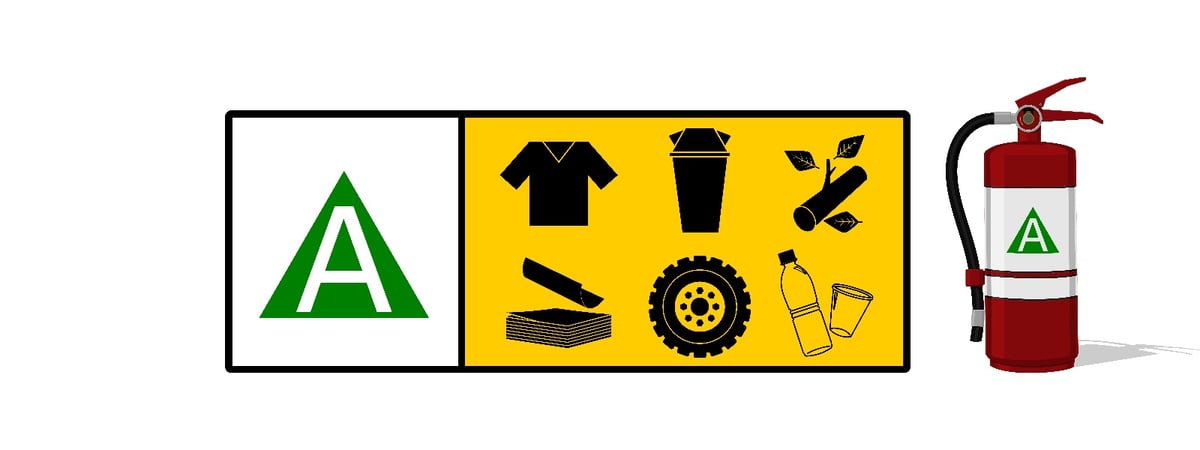
Far too few individuals are aware that fire extinguishers not only come in many types but in specific classes as well, which are intended to indicate the types of fires for which they are effective.
However, since life and property can be dependent on the use of the correct extinguisher on the correct type of fire, in this blog series, the different classes of fire extinguishers and the types of fires they each can handle will be explained, starting with the Class A fire extinguisher. 
What Are Class A Fires?
First, it is best to know what a Class A fire is to understand better what the Class A fire extinguisher is intended to do.
Class A fires are ones with ordinary combustible materials, such as wood, paper, rubber, cloths, and even plastics. One of the most recognizable markers of a Class A fire is that its fuel sources leave ash behind when they burn. They are the simplest types of fires and involve regular materials most commonly found in homes and offices. The easiest way to remember a Class A material is that is leaves an ash when it burns.
It is these types of fires that Class A fire extinguishers are effective for putting out.
Class A Fire Extinguishers: Types and Applications
As noted above, there are many different types of extinguishers on the market. So, which types are typically rated for Class A fires?
- Water: A water extinguisher’s purpose is to remove the heat from a fire, breaking the “fire triangle.” It is a simple solution for the simplest fire class, the Class A fire.
- Foam: This extinguishing agent helps both to cool and suffocate fires and are also largely used for Class A fires.
- Multipurpose Dry Chemical: Multipurpose dry chemical fire extinguishers are effective for Class A fires, as well as Classes B and C. The agent in these types interrupts the chemical reaction in the Fire Triangle (fuel, oxygen, heat plus a chemical reaction) to extinguish a Class A fire.
It should be noted that standard (BC) dry chemical fire extinguishers, using a sodium bicarbonate-based agent, are NOT effective on Class A, and are only intended for Class B and C fires. - Clean Agent: These extinguishers use halogenated, or “clean” agents, which avoid contamination of the area and are more environmentally friendly. This agent interrupts the chemical reaction and also cools the material to remove the heat element from the fire. Larger handheld models (11lbs and larger) can be rated for Class A fires, but smaller handheld models don’t contain enough agent to be rated for Class A.
- Water Mist: A relatively new development, water mist extinguishers can also operate as a “clean agent” type, the mist avoids the types of water damage caused by a regular water extinguisher and is safe to use on live electric wires. This agent removes the heat from a fire and is primarily used as a Class A extinguisher and where a potential Class C hazard exists.
Certain types of extinguishers may be used on more than just Class A, such as the multi-purpose dry chemical extinguisher, while others are only ever classified as A, such as the water extinguisher.
It is vital that you use a fire extinguisher classified for the type of fire you are dealing with. Using a wrong fire extinguisher at best could prove ineffective, and at worst, could spread the fire or hazard (such as if a water extinguisher is applied to an oil fire or electrocute you if it is used on an electrical fire).
Do You Have The Correct Fire Extinguisher?
Is your home or workplace protected by the correct class of fire extinguisher? As noted above, it is vital you have an extinguisher suited for the types of fire hazards unique to the environment it is protecting.
If you need Class A fire extinguishers or are unsure of which class and type that would be best suited to your needs, call the experts at Koorsen today. They can provide all of the information and training you need to keep your property and people safe.

